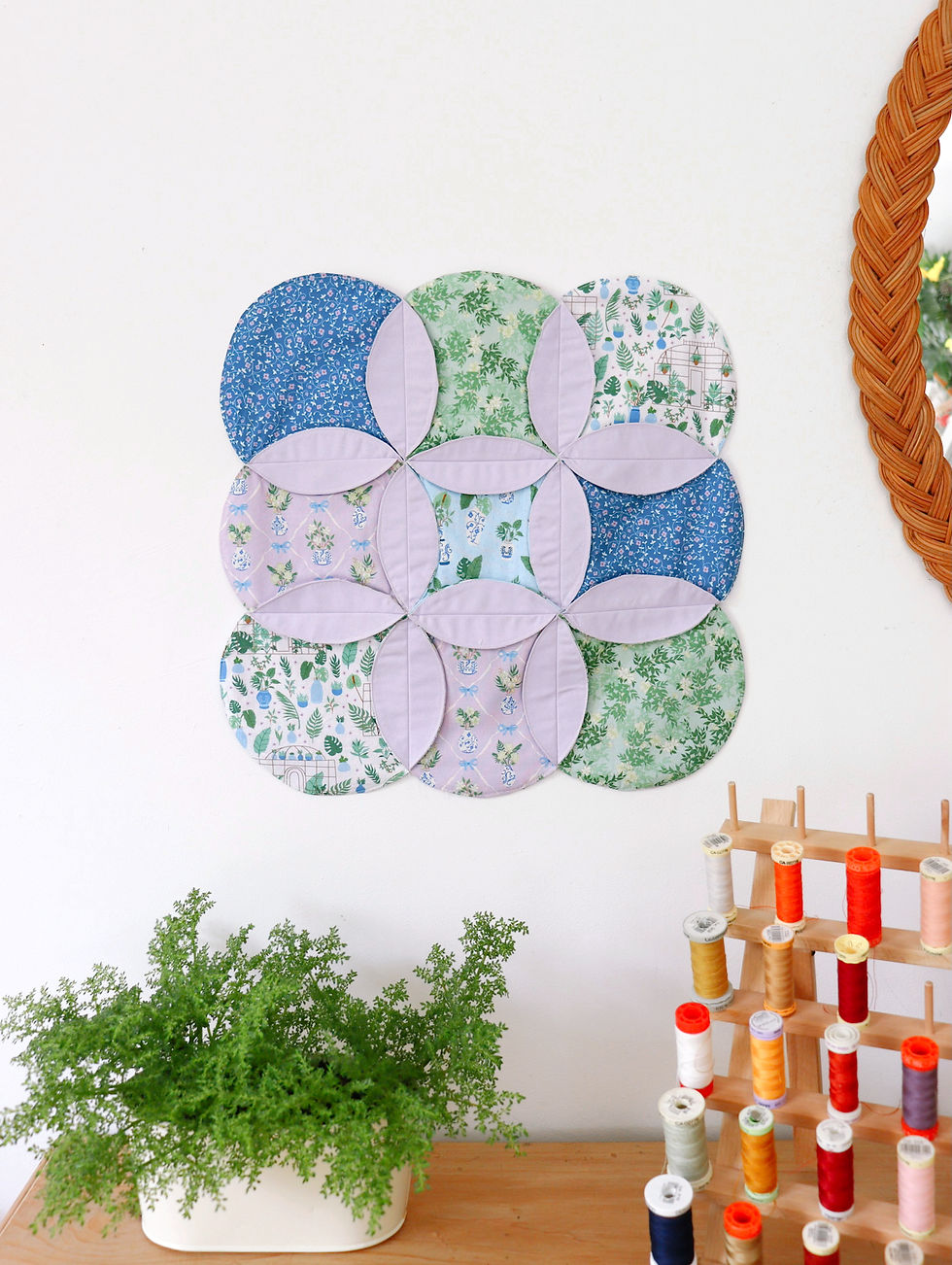How to Make a Pleated Frill Cushion Cover - Knife Pleat (Fork Pleats Hack) Free Sewing Tutorial
- Kimberley Hind
- Oct 9, 2021
- 4 min read
Updated: Jul 16
Add a touch of handmade charm to your home with this DIY pleated cushion cover tutorial. Featuring three tiers of neat knife pleats, this cushion is a stylish and simple way to refresh any bedding or seating area. Plus, there's a clever trick: we’ll be using a fork to create perfect pleats - no measuring needed!
This project uses three different fabrics and includes a zipped back for a clean, professional finish.

What is Knife Pleating?
Knife pleats are a series of evenly spaced folds all going in the same direction. Traditionally used in skirts and tailoring, they also add beautiful texture to cushions. Instead of marking out every pleat manually, we’re using a fork pleating hack - a quick and clever trick using an ordinary dinner fork to create perfectly spaced pleats.
Tip: Practice on scrap fabric before using your main pieces if you’re new to fork pleating.
You’ll Need:
Fabric:
3 strips of fabric, each 112cm (width of fabric) x 24cm (for the pleated tiers)
1 patterned fabric strip (same as top pleat), 42cm x 8cm
1 plain fabric piece, 42cm x 24cm
2 backing fabric pieces, 42cm x 17cm each
Notions & Tools:
40cm zip
40 x 30cm cushion pad
Pins
Quick unpick
Fabric glue pen
Fork
Sewing machine
Iron
Finished cushion size: 40cm x 30cm
Let's sew!
Sew the 8cm patterned strip to the top edge of the 24cm plain fabric, right sides together. Press the seam open. This creates the base for your pleated cushion front.

Fold each of the three 112cm x 24cm fabric strips in half lengthways, right sides together, and sew along the long edge to form a tube. Turn them right side out and press flat.

Take the fabric strip that matches your patterned panel. Position it 4cm below the seam where the panel joins the plain fabric. Line up the left side of the strip with the left side of the panel.
To make the pleats:
Hold the fork with the curved side facing up.
Slide the top edge of the fabric between the first and second prongs.
Twist the fork to one side to form a pleat.
Pin in place.
Continue pleating evenly across the full width of the strip, pinning as you go.
Once pleated, topstitch along the top edge to secure it.


4. Place the second fabric strip on the cushion front (my second strip is blue), making sure the top pleated strip slightly overlaps the top of the second strip. This creates a layered effect and hides the top edge of the pleat underneath. Repeat the fork pleating technique across the strip and topstitch along the top edge to secure the pleats in place.
Repeat the same process for the third strip, positioning it so it slightly overlaps the second pleated row.
Tip: Lay all three strips on the cushion front before you start sewing to check the spacing and alignment. This helps ensure a neat, evenly spaced finish.

5. Once all three pleated rows are attached, your cushion front is complete.

6. To make the back of the cover, sew the two 42cm x 17cm backing pieces right sides together along one long edge using a 1cm seam allowance. Press the seam open.

7. Place the zip, facing down, over the seam and secure with a fabric glue pen or pins.

8. Sew down each side of the zip.

9. From the right side, unpick the original seam stitches to reveal the zip.

10. Open the zip slightly and sew a few stitches across each end inside of the seam allowance to keep it in place.

11. Trim the back panel to match the size of the pleated front.
With right sides together, sew all the way around the cushion, ensuring the zip is open.
Carefully tuck the bottom pleated strip out of the way when sewing the lower edge.
As you sew, make sure to catch the sides of the pleats in the seam allowance. This will help keep the pleats in place and give the cushion a more structured finish.

12. Slip the corners inside the seam allowance so they turn out neatly, turn the cushion cover right side out through the zip opening and insert your cushion pad to finish!

Optional: Make a Larger Frilled Version
To make a larger cushion (45cm square), use the same fork pleating method to create a pleated frill trim and sew around the edge. Adjust your fabric measurements to suit your desired cushion size.
Knife Pleat Formula -
3:1 fabric ratio: Knife pleats usually compress at a 3:1 ratio. Using 3 cm of fabric yields a 1 cm pleat width.

And that’s it, your pleated cushion cover is ready to show off. This project is such a fun way to play with texture and fabric, and the fork pleats really add something special. Have a go at mixing prints or trying it on different cushion sizes. I’d love to see what you make, so feel free to share your version!
AD | Fabric gifted from The Bee Fabric Co. and Dunelm to create this tutorial




Comments